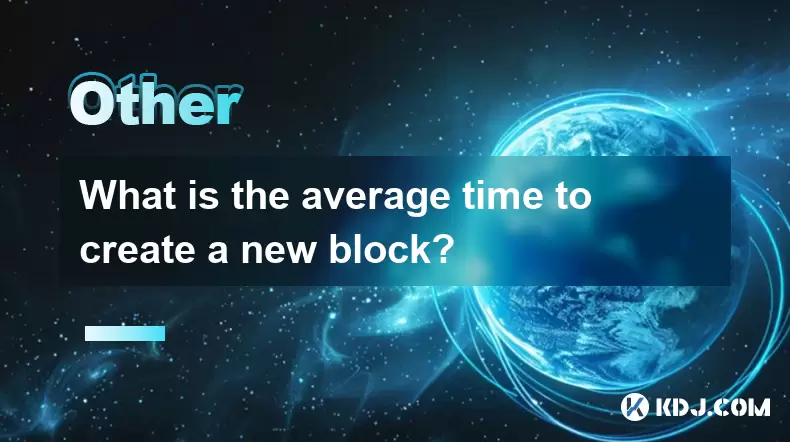-
 Bitcoin
Bitcoin $117500
2.15% -
 Ethereum
Ethereum $3911
6.19% -
 XRP
XRP $3.316
10.79% -
 Tether USDt
Tether USDt $1.000
0.01% -
 BNB
BNB $787.2
2.24% -
 Solana
Solana $175.2
4.15% -
 USDC
USDC $0.9999
0.00% -
 Dogecoin
Dogecoin $0.2225
8.40% -
 TRON
TRON $0.3383
0.28% -
 Cardano
Cardano $0.7868
6.02% -
 Stellar
Stellar $0.4382
9.34% -
 Hyperliquid
Hyperliquid $40.92
7.56% -
 Sui
Sui $3.764
7.63% -
 Chainlink
Chainlink $18.48
10.66% -
 Bitcoin Cash
Bitcoin Cash $582.1
1.88% -
 Hedera
Hedera $0.2601
6.30% -
 Avalanche
Avalanche $23.33
4.94% -
 Ethena USDe
Ethena USDe $1.001
0.02% -
 Litecoin
Litecoin $122.3
2.04% -
 UNUS SED LEO
UNUS SED LEO $8.969
-0.27% -
 Toncoin
Toncoin $3.339
0.86% -
 Shiba Inu
Shiba Inu $0.00001287
4.30% -
 Uniswap
Uniswap $10.43
7.38% -
 Polkadot
Polkadot $3.861
5.08% -
 Dai
Dai $1.000
0.02% -
 Bitget Token
Bitget Token $4.513
3.41% -
 Monero
Monero $267.7
-6.18% -
 Cronos
Cronos $0.1499
4.14% -
 Pepe
Pepe $0.00001110
5.15% -
 Aave
Aave $284.9
8.28%
Is blockchain anonymous?
Blockchain transactions are pseudonymous, not truly anonymous—while names aren't shown, wallet addresses can be linked to identities via analytics, exchanges, or IP logs.
Aug 08, 2025 at 09:21 am

Understanding Blockchain and Anonymity
The concept of blockchain anonymity is often misunderstood. While many believe that blockchain transactions are completely anonymous, the reality is more nuanced. Most public blockchains, such as Bitcoin and Ethereum, operate on a transparent ledger where every transaction is recorded and visible to anyone. This means that while user identities are not directly attached to wallet addresses, the transaction history is permanently stored and traceable. The addresses used in transactions are pseudonymous, meaning they do not reveal real-world identities but can be linked to individuals through analysis.
When a user sends cryptocurrency, the transaction includes the sender’s and receiver’s public addresses, the amount transferred, and a timestamp. These details are broadcast to the network and added to blocks. Although no names or personal information appear in the transaction data, linking a wallet address to a person is possible through external data such as exchange registrations, IP logs, or spending patterns. Law enforcement agencies and blockchain analytics firms regularly use these methods to track illicit activities.
Distinguishing Between Pseudonymity and True Anonymity
It is crucial to differentiate pseudonymity from true anonymity in the context of blockchain. Pseudonymity means that a user is identified by a persistent identifier — in this case, a public wallet address — rather than their real name. However, if that identifier becomes associated with a real identity, all past and future transactions linked to that address can be exposed.
True anonymity, as seen in privacy-focused cryptocurrencies like Monero (XMR) and Zcash (ZEC), employs advanced cryptographic techniques to obscure transaction details. For example, Monero uses ring signatures, which mix a user’s transaction with others to hide the origin, and stealth addresses, which generate one-time addresses for each transaction to protect the recipient. Zcash offers optional shielded transactions using zk-SNARKs (zero-knowledge succinct non-interactive arguments of knowledge), allowing users to conceal sender, receiver, and amount.
These technologies ensure that even if the blockchain is public, the data on it cannot be meaningfully interpreted without access to specific decryption keys, thus achieving a higher degree of actual anonymity compared to pseudonymous blockchains.
How Blockchain Analytics Can De-anonymize Users
Despite the perception of privacy, blockchain analytics tools have made it increasingly possible to de-anonymize users on public ledgers. Companies like Chainalysis, Elliptic, and CipherTrace specialize in tracking cryptocurrency flows. They use clustering algorithms to group addresses likely controlled by the same entity, based on transaction patterns such as shared inputs or change address reuse.
For instance, if a user withdraws Bitcoin from a regulated exchange that requires KYC (Know Your Customer) verification, the exchange links the user’s identity to a specific wallet address. Any transaction from that address can then be traced across the blockchain. Even if the user sends funds through multiple wallets, chain analysis can follow the trail by identifying transaction graph patterns.
Moreover, IP address logging can compromise anonymity. If a user broadcasts a transaction without using a VPN or Tor, their IP address might be captured by nodes that receive the transaction first. This metadata, when combined with wallet activity, can help pinpoint a user’s location and identity.
Privacy-Enhancing Techniques and Tools
Users seeking greater privacy on public blockchains can employ several strategies to reduce traceability. One common method is using coin mixing services, also known as tumblers. These services combine multiple users’ funds and redistribute them, making it difficult to trace the original source. Examples include Wasabi Wallet and Samourai Wallet, which integrate CoinJoin protocols to mix Bitcoin transactions.
Another effective practice is avoiding address reuse. Each time a new address is used for receiving funds, it becomes harder to link transactions to a single owner. Wallet software that supports Hierarchical Deterministic (HD) structures automatically generates new addresses, enhancing privacy.
Using Tor or a trusted VPN when interacting with blockchain networks can help mask IP addresses. Additionally, privacy-focused browsers and avoiding login to blockchain explorers while logged into personal accounts reduce the risk of metadata leaks.
For maximum privacy, users can opt for decentralized exchanges (DEXs) instead of centralized ones, avoiding KYC requirements. However, even DEX usage may leave traces if the initial funding source is traceable.
Examples of Privacy-Oriented Blockchains
Certain blockchains are specifically designed to prioritize user anonymity. Monero is one of the most prominent, using ring signatures, stealth addresses, and RingCT (Ring Confidential Transactions) to hide transaction amounts and participants. Every Monero transaction is private by default — there is no option to make it transparent.
Zcash provides a hybrid model: users can choose between transparent and shielded transactions. Shielded transactions use zk-SNARKs to validate transfers without revealing any details. However, due to usability challenges and performance costs, many users still opt for transparent transactions, limiting the network’s overall privacy.
Dash offers PrivateSend, a mixing feature based on CoinJoin principles, though it is not as robust as Monero’s privacy mechanisms. Grin and Beam, built on the Mimblewimble protocol, enhance privacy by eliminating address information and using confidential transactions, with transaction data compressed and pruned over time.
These systems demonstrate that true blockchain anonymity is achievable, but it requires deliberate design choices and user participation in privacy-preserving practices.
Frequently Asked Questions
- Can someone see my name when I make a blockchain transaction?
No, your real name does not appear in any transaction on public blockchains like Bitcoin or Ethereum. However, if your wallet address is ever linked to your identity — for example, through an exchange withdrawal — your transaction history becomes traceable.Are all cryptocurrencies equally private?
No, privacy levels vary significantly. Bitcoin and Ethereum are pseudonymous, while Monero and Zcash (when using shielded transactions) offer stronger anonymity through cryptographic privacy features.Is it possible to recover anonymity after linking a wallet to my identity?
Once a wallet is linked to your identity, all associated transactions are potentially exposed. To improve privacy, you can transfer funds to a new wallet through a mixer or privacy coin, but this does not erase the original link on the blockchain.Do private blockchains offer more anonymity than public ones?
Private blockchains typically have restricted access and are used by organizations. They do not offer user anonymity; instead, they prioritize permissioned control. Anonymity is generally lower because participant identities are known to the network operators.
Disclaimer:info@kdj.com
The information provided is not trading advice. kdj.com does not assume any responsibility for any investments made based on the information provided in this article. Cryptocurrencies are highly volatile and it is highly recommended that you invest with caution after thorough research!
If you believe that the content used on this website infringes your copyright, please contact us immediately (info@kdj.com) and we will delete it promptly.
- Stablecoins, Hong Kong, and On-Chain Finance: Navigating the Regulatory Maze
- 2025-08-08 12:30:12
- Tron's Sell-Off Spurs Altcoin Shift: What's Next for TRX?
- 2025-08-08 08:30:12
- Euler, DeFi, and Coinbase: A New York Minute on the Latest Buzz
- 2025-08-08 12:30:12
- RUVI Presale: Is the Growth Potential Real?
- 2025-08-08 09:10:12
- Sleep Token's US Takeover: Thornhill Rides the 'Even In Arcadia' Wave
- 2025-08-08 08:30:12
- FTT Token's Wild Ride: Creditor Repayments vs. Market Drop - A New Yorker's Take
- 2025-08-08 07:10:12
Related knowledge

What is the purpose of a nonce in mining?
Aug 04,2025 at 05:56pm
Understanding the Role of a Nonce in Cryptocurrency MiningIn the world of cryptocurrency mining, the term nonce stands for 'number used only once.' Th...

Can data on a blockchain be deleted?
Aug 05,2025 at 04:00am
Understanding Blockchain ImmutabilityThe core principle behind most blockchain systems is immutability, which means that once data is recorded onto th...

What is the difference between on-chain and off-chain transactions?
Aug 02,2025 at 04:22pm
Understanding On-Chain TransactionsOn-chain transactions refer to digital asset transfers that are recorded directly on a blockchain ledger. These tra...

What is the average time to create a new block?
Aug 06,2025 at 09:21pm
Understanding Block Creation in Blockchain NetworksThe average time to create a new block varies significantly depending on the specific blockchain pr...

How are blocks linked together?
Aug 04,2025 at 06:56am
Understanding the Structure of a BlockchainA blockchain is a decentralized digital ledger composed of a sequence of blocks, each containing a list of ...

What are some of the main challenges facing blockchain technology?
Aug 07,2025 at 02:58am
Scalability Constraints in Blockchain NetworksOne of the most persistent challenges in blockchain technology is scalability. As blockchain networks gr...

What is the purpose of a nonce in mining?
Aug 04,2025 at 05:56pm
Understanding the Role of a Nonce in Cryptocurrency MiningIn the world of cryptocurrency mining, the term nonce stands for 'number used only once.' Th...

Can data on a blockchain be deleted?
Aug 05,2025 at 04:00am
Understanding Blockchain ImmutabilityThe core principle behind most blockchain systems is immutability, which means that once data is recorded onto th...

What is the difference between on-chain and off-chain transactions?
Aug 02,2025 at 04:22pm
Understanding On-Chain TransactionsOn-chain transactions refer to digital asset transfers that are recorded directly on a blockchain ledger. These tra...

What is the average time to create a new block?
Aug 06,2025 at 09:21pm
Understanding Block Creation in Blockchain NetworksThe average time to create a new block varies significantly depending on the specific blockchain pr...

How are blocks linked together?
Aug 04,2025 at 06:56am
Understanding the Structure of a BlockchainA blockchain is a decentralized digital ledger composed of a sequence of blocks, each containing a list of ...

What are some of the main challenges facing blockchain technology?
Aug 07,2025 at 02:58am
Scalability Constraints in Blockchain NetworksOne of the most persistent challenges in blockchain technology is scalability. As blockchain networks gr...
See all articles

























































































